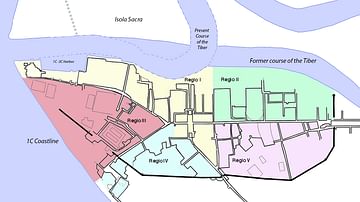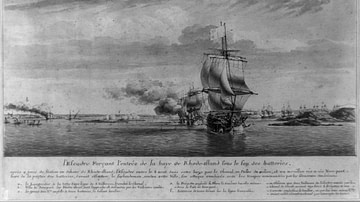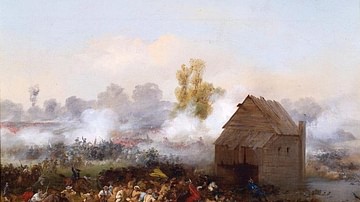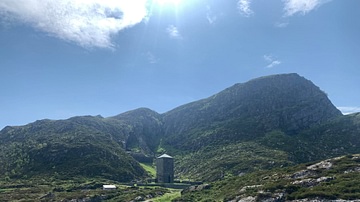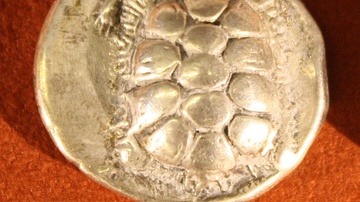Server Costs Fundraiser 2024
Help our mission to provide free history education to the world! Please donate and contribute to covering our server costs in 2024. With your support, millions of people learn about history entirely for free every month.
$3926 / $18000
Video
by American Institute for Roman Culture
published on 30 January 2020
The Tiber Island is almost 300 X 70 meters, which the Romans referred to as “inter duos pontes” between the two bridges. It seems most of its mass is owed to the formation of a sandbar, historically added to by the Romans, as an easier way to ford the Tiber River (versus the wooden Pons Sublicius). Traditionally, the Romans credited its formation from the huge amount of grain dumped into the Tiber, after the expulsion of Tarquin the Proud. The grain, ready for harvest but in the Campus Martius, recently destined as ager publicus, was for religious purposes considered sacred and was forbidden to be consumed. The resulting mass of grain dumped in this spot led to the formation of the island. (Livy, History. 2.5.2-4).
Find out more about Tiber Island at https://ancientromelive.org/tiber-island/
This content is brought to you by The American Institute for Roman Culture (AIRC), a 501(C)3 US Non-Profit Organization.
License & Copyright
Original video by American Institute for Roman Culture. Embedded by Darius Arya, published on 30 January 2020. Please check the original source(s) for copyright information. Please note that content linked from this page may have different licensing terms.
The video and its description text are provided by Youtube. This website claims no authorship of this content; we are republishing it for educational purposes.
Cite This Work
APA Style
Culture, A. I. f. R. (2020, January 30). Tiber Island - Ancient Rome Live (AIRC).
World History Encyclopedia. Retrieved from https://www.worldhistory.org/video/1936/tiber-island---ancient-rome-live-airc/
Chicago Style
Culture, American Institute for Roman. "Tiber Island - Ancient Rome Live (AIRC)."
World History Encyclopedia. Last modified January 30, 2020.
https://www.worldhistory.org/video/1936/tiber-island---ancient-rome-live-airc/.

